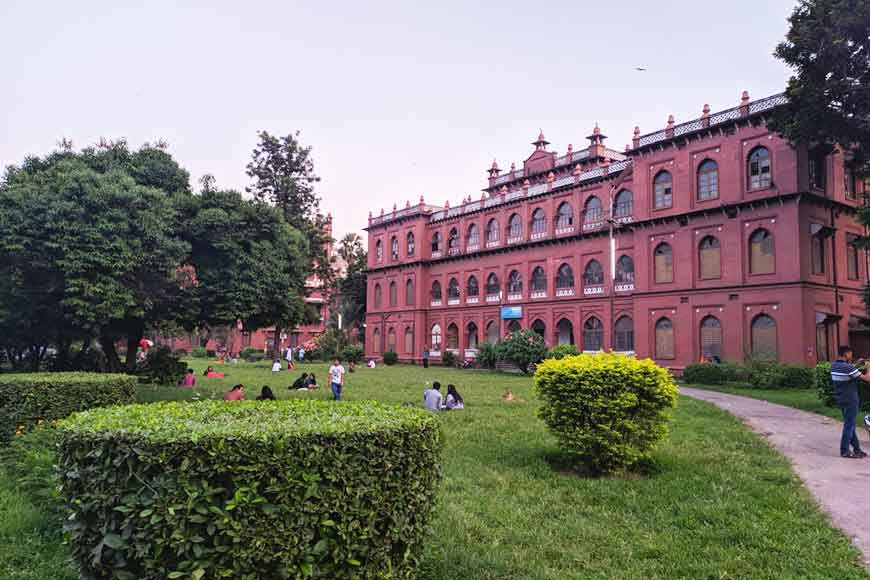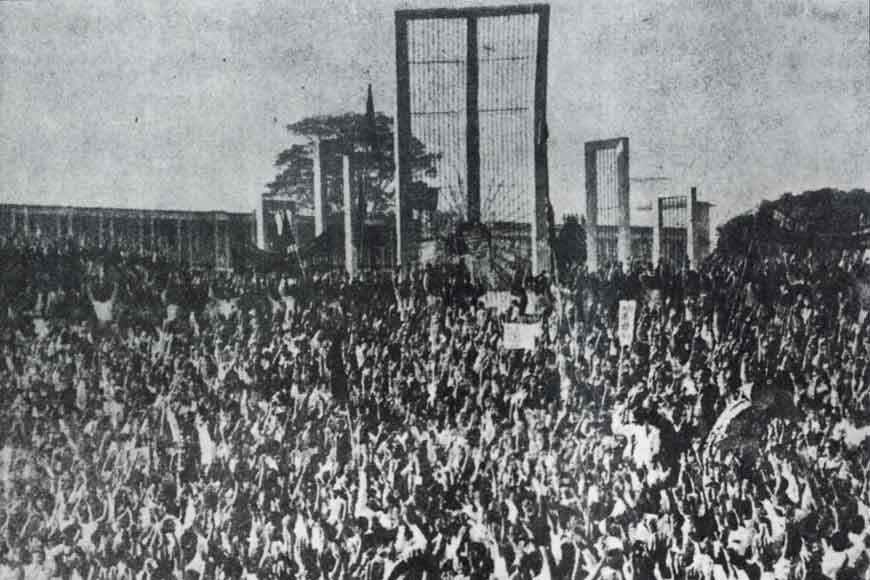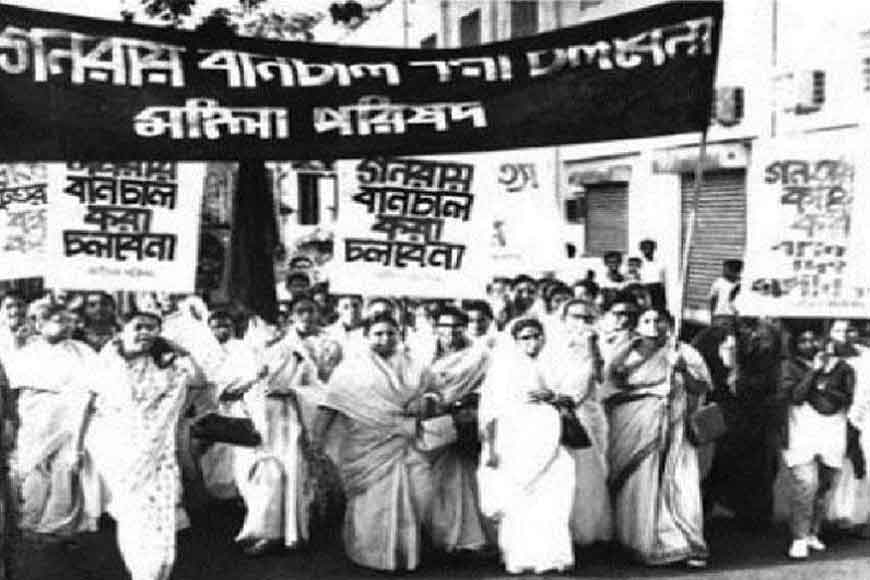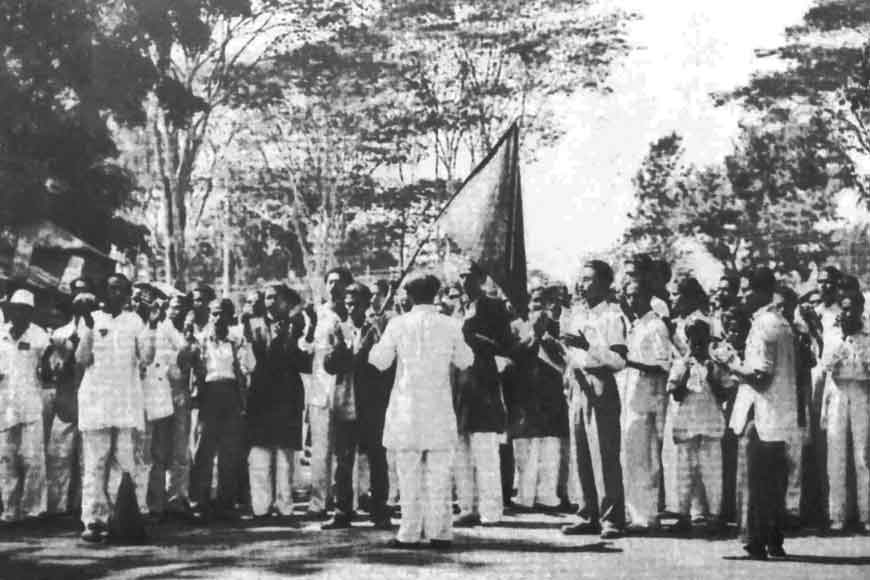Story of Dhaka University – The Museum of Bhasha Andolan

By 1947, there were five faculties and 17 teaching departments at Dhaka University. At present, the university consists of 13 faculties, 83 departments, 12 institutes, 20 residential halls, three hostels and more than 56 research centres. The number of students and teachers has risen to about 37,018 and 1,992, respectively. Each academic year, more than 5,800 students enroll to study in this prestigious institute. ‘Asia Week’ magazine identified this hallowed institution as one of the top 100 universities in Asia for three consecutive years (1998-2000 AD). The university has rendered a valuable service to the higher education of Bangladesh.
Although the university had a political origin, it was never intended to serve the interest of a particular community. In the early years of its history, more than 80 per cent of its students and teachers were Hindus. Within a few years of its establishment, the university became the intellectual hub of Bengal. In 1926, Nobel Laureate poet Rabindranath Tagore was accorded a grand reception at the university. The following year, rebel poet Kazi Nazrul Islam was felicitated. In 1936, novelist Sarat Chandra Chattopadhyay was invited to the university. Both Tagore and Chattopadhyay were awarded D. Lit (Honoris Causa) by the university in 1936. The rebel poet was awarded D. Lit (Honoris Causa) in 1974.
The educated middle class that has been emerging from the university’s sanctum sanctorum from the time it was launched, has been acting as a catalyst for social and political change. The movement for intellectual freedom was initiated in this university in 1926. The university campus has always been the breeding ground of groundbreaking progressive movement, nationalist movement and movement against the British rule. One thing must be acknowledged that this is perhaps the only university in the world which has played a very important role in the establishment of an independent nation. From the language movement of 1952, the education movement of 1962, the anti-Ayub movement of 1967-69 and the Liberation War of 1971, Dhaka University has played roles which can be seen as unique in the world. Even in the post liberation Bangladesh, the students of Dhaka University spearheaded the anti-Ershad movement of the 1990s. Dhaka University students took the cudgel once again in 2013, demanding the death penalty for Abdul Quader Mollah, assistant secretary-general of Bangladesh's Jamaat-e-Islami party, a man convicted of beheading a poet, raping an 11-year-old girl and shooting 344 people during the Bangladesh Liberation War of 1971 that earned him the nickname, the ‘Butcher of Mirpur’.
Post the second and final Partition of Bengal in 1947, Bengalis from either side of the newly-formed nations were shaken and shocked to the core. They were still smarting under the trauma and were yet to assess and come to terms with the magnitude of pain and loss when the citizens of East Pakistan were forced to encounter a new challenge. After Partition, the Dominion of Pakistan comprised various ethnic and linguistic groups, with the geographically detached East Bengal province having a mainly Bengali population.

In November 1947, a key resolution at a national education summit in Karachi advocated Urdu and English as the sole state languages. Opposition and protests arose immediately. Students from Dhaka rallied under the leadership of Abul Kashem, secretary of Tamaddun Majlish, a Bengali Islamic cultural organisation. The meeting stipulated Bengali as an official language of the Dominion of Pakistan and as a medium of education in East Bengal. However, the Pakistan Public Service Commission removed Bengali from the list of approved subjects, as well as from currency notes and stamps. The central education minister Fazlur Rahman made extensive preparations to make Urdu the only state language of the Dominion of Pakistan. Public outrage spread, and many Bengali students met on the University of Dhaka campus on 8 December 1947 to formally demand that Bengali be made an official language. To promote their cause, Bengali students organised processions and rallies in Dhaka.
Students of the University of Dhaka and other colleges of the city organised a general strike on 11 March 1948 to protest the omission of Bengali language from official use. The local administration came down heavily on the protesters, arresting political leaders including Shamsul Huq, Shawkat Ali, M Sirajul Islam, Kazi Golam Mahboob, Oli Ahad, Abdul Wahed and others. A group of students marching towards the official residence of chief minister Khawaja Nazimuddin's was stopped. Police attacked the procession injuring several students and leaders, including A. K. Fazlul Huq. Continuing strikes were observed the following four days.
The Urdu-Bengali controversy continued when Jinnah's successor, Governor-General Khawaja Nazimuddin, staunchly defended the "Urdu-only" policy in a speech on 27 January 1952. In an attempt to prevent demonstration and rallies, the government imposed Section 144 in Dhaka, thereby banning any gathering. However, students of the University of Dhaka and other political activists defied the law and organised a protest on 21 February 1952. The movement reached its climax when police killed demonstrators indiscriminately on that day. The deaths provoked widespread civil unrest. After years of conflict, the central government relented and granted official status to the Bengali language in 1956.

The Language Movement led to the assertion of Bengali national identity in East Bengal and later East Pakistan, and became a forerunner to Bengali nationalist movements, including the 6-Point Movement and subsequently the Bangladesh Liberation War.
The 1960s heralded an epoch of student movements. The student movement of the 1960s rested on the notion of change. Students wanted to end the consensus culture that formed following World War II, eliminate racial discrimination and free themselves from the authoritarian rule of the establishment.
Throughout the 1960s, reportage of student activism on campuses across the world was regularly seen in newspapers, on televisions, and even in worried government reports. Indeed, in 1968, the United States Central Intelligence Agency (CIA) composed a two-volume report on student activism, domestic and international, which was entitled, simply “Restless Youth” (1968).
Although the question of official languages was settled by 1956, the military regime of Ayub Khan promoted the interests of West Pakistan at the expense of East Pakistan. Despite forming the majority of the national population, the East Pakistani population continued to be under-represented in the civil and military services and received a minority of state funding and other government help. The sectional divisions grew as a result of regional economic, social, and political imbalances. Discontent was simmering underneath the frayed fabric of Pakistan and the demand for greater provincial autonomy for East Pakistan was rising.
Meanwhile, in 1962, Ayub Khan appointed a new provincial Governor to East Pakistan, Abdul Monem Khan. Monem Khan was enormously unpopular, particularly among students. He believed that Dhaka University’s politicized students presented a threat to state stability and he directed a concentrated campaign to undermine the political power that the place represented. Within months of his appointment, he replaced the vice-chancellor with a more cooperative figure and orchestrated the firing of several known dissident professors.
Also read : The language movement that led to freedom
In retaliation, students of Dhaka University articulated a frustration with the economic and political disparity between the Eastern and Western wings of Pakistan and became major supporters of the Awami League and its Six Points Platform. Sheikh Mujibar Rahman, the undisputed leader of Awami League nurtured a close relationship with the campus and students. Dhaka University once again played a pioneering role and demanded its right to self-determination that eventually led to the liberation war of Bangladesh.
West Pakistan was determined to crush the uprise of the Bengali nationalist and self-determination movement in East Pakistan. On the night of March 11, 1971 the West Pakistani military junta launched Operation Searchlight against the people of East Pakistan. It began with great cunningness, surprise, deception and speed and planning. Describing the bloodbath of that fateful March night, Brigadier Siddique Salik, then a Major in the Pakistan Army wrote in his memoirs "Witness to Surrender", “The gates of hells had been cast open,".

The Pakistan army used all kinds of combat weapons in their arsenal that night—tanks, heavy artillery, rocket launchers, recoilless rifles, heavy machine gun—to wipe out Bengalis from the face of the earth. Dhaka University, the epicentre of Bengalis' struggle for self-determination, was one of the three key targets (the two others being East Pakistan Rifles HQ at Pilkhana and Rajarbagh Police Lines) of Pakistan Army's genocidal Operation Searchlight.
It pursued the systematic elimination of nationalist Bengali civilians, students, intelligentsia, religious minorities and armed personnel. Residential halls of the University of Dhaka were particularly targeted. The only Hindu residential hall—Jagannath Hall—was destroyed by the Pakistani armed forces, and an estimated 600 to 700 of its residents were murdered. Overwhelming force was used at the university to massacre students at the dormitories of Dhaka University. Madhu Da’s Canteen (Madhusudan Dey’s canteen), the vibrant centre that Dey unwittingly created was the epicentre of many significant movements and was considered as a parallel school of progressive thought, politics and rational debates. It was shelled by the junta and razed to the ground.
Pakistani soldiers lined up students in the field and shot them. After they were killed, their bodies were bayoneted to confirm death. Besides, the Pakistan army vandalised Dhaka University Teachers' Club and killed four of its staff. They also killed 12 students of Salimullah Muslim Hall, seven students of Fazlul Huq Muslim Hall, seven students of Master Da Surja Sen Hall (Jinnah Hall in 1971) and 10 students of Haji Muhammad Mohsin Hall. All the priests of Gurudwara Nanak Sahi, Shib Bari temple and Ramna Kali temple were killed. They also killed 27 Hindus in Ramna Kali temple who took shelter there on March 27.
Herbert D Spivack, the US Consul General in Dhaka, sent a report to his government describing what had happened in Ruqayyah Hall (the biggest female dormitory of the university) of Dhaka University on that night. He stated in the report that six female corpses were found in a room of Ruqayyah Hall. The corpses were found unclothed with gagged mouths and bound hands. Besides, all of the employees of the dormitory were killed along with all of their family members that night. Fortunately, most of the female students escaped the genocide as they left the dormitory several days earlier due to the students' strike. Later it was estimated that on March 25 and 26, the Pakistani army killed at least 200 students and 10 teachers of Dhaka University.
There are hundreds of places in Dhaka University which have immense significance for their connection with Bangladesh's history. In fact, the entire university campus can be considered as a museum of the liberation war of 1971.










